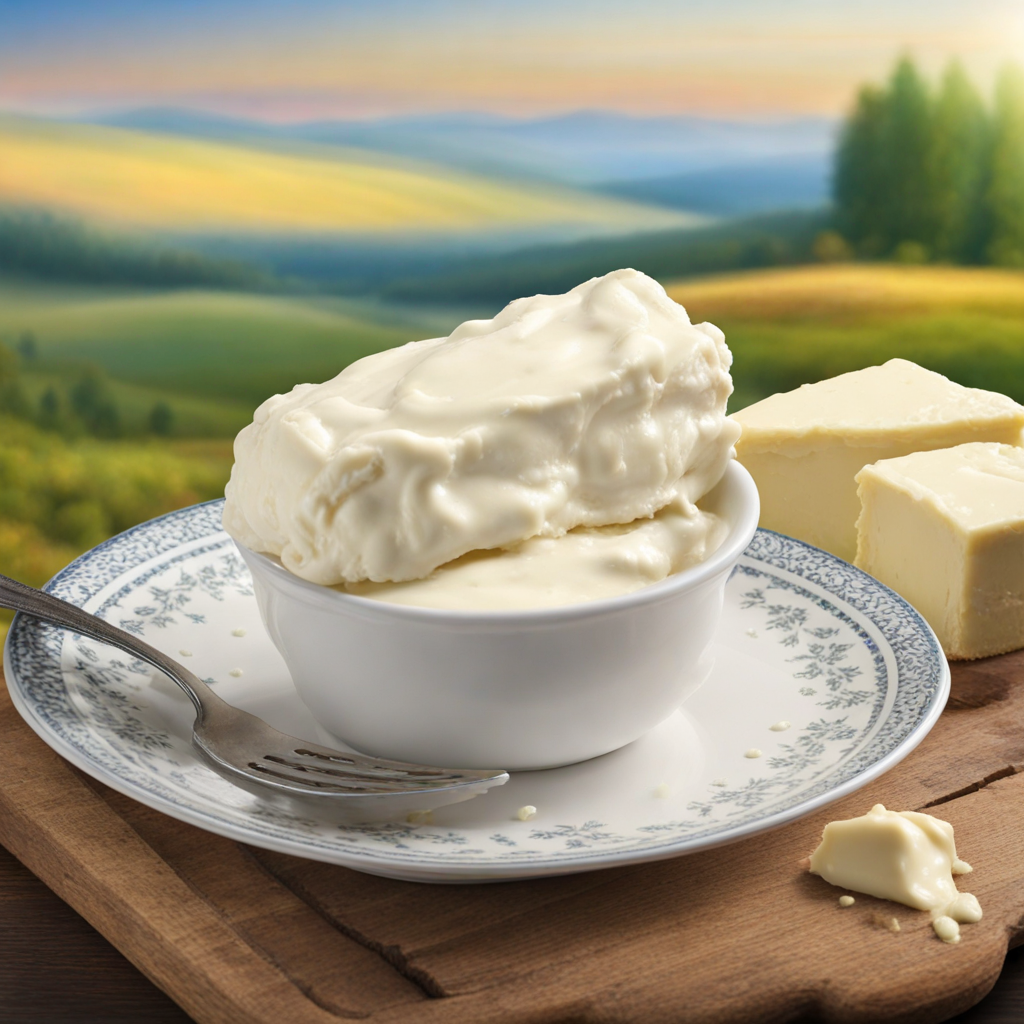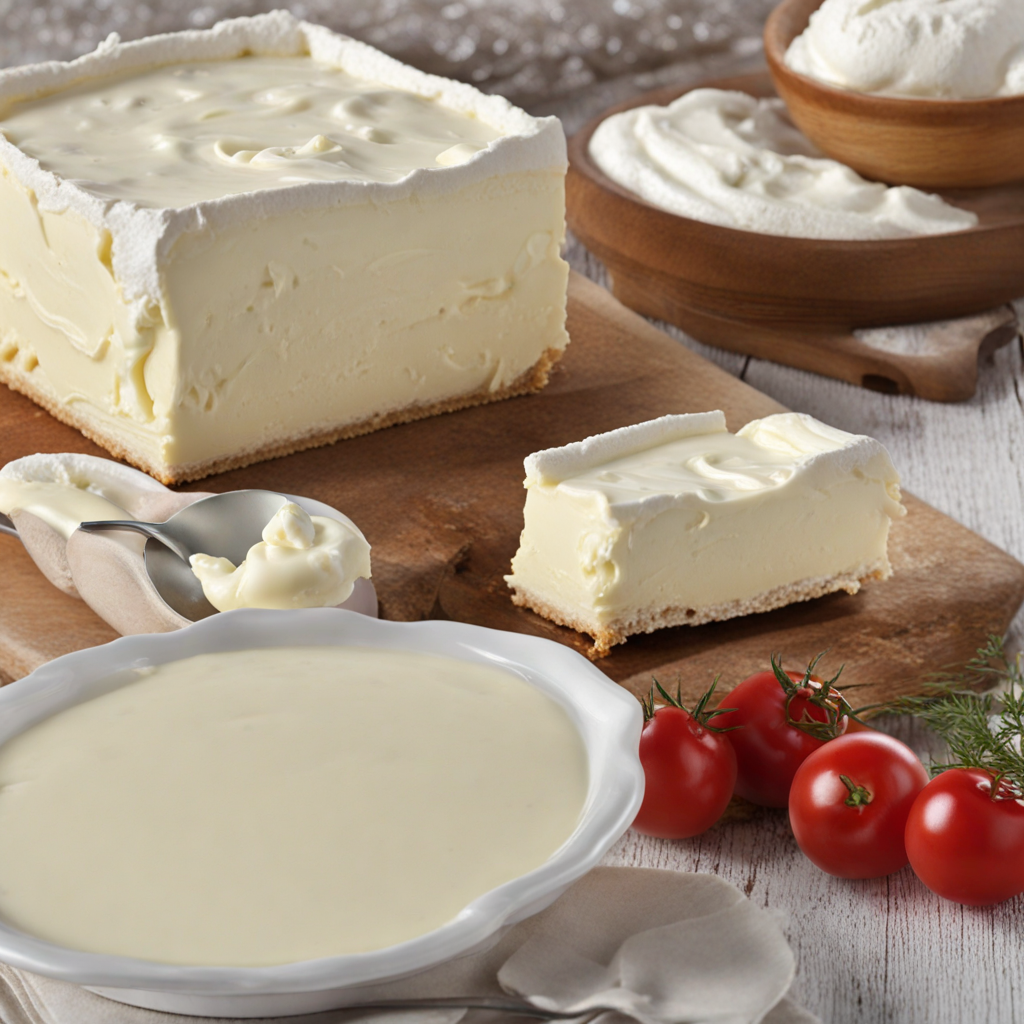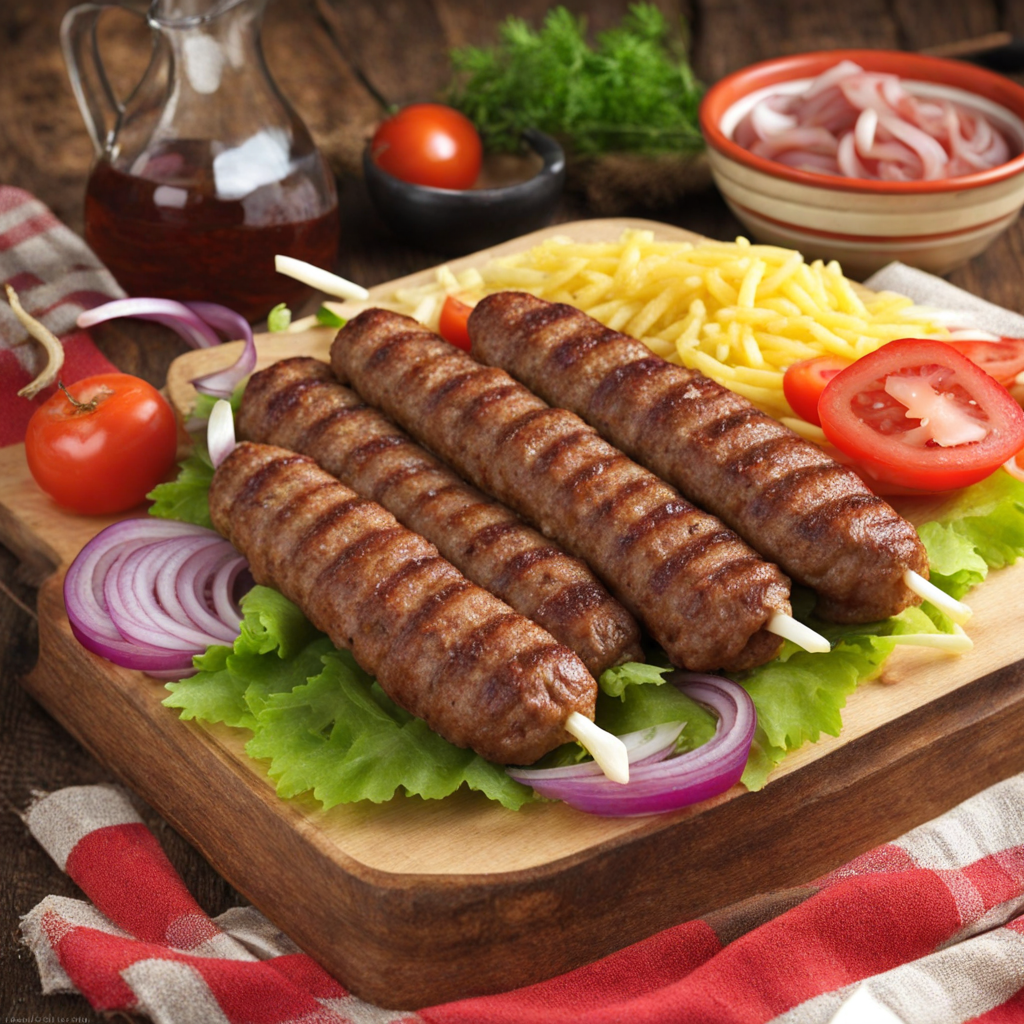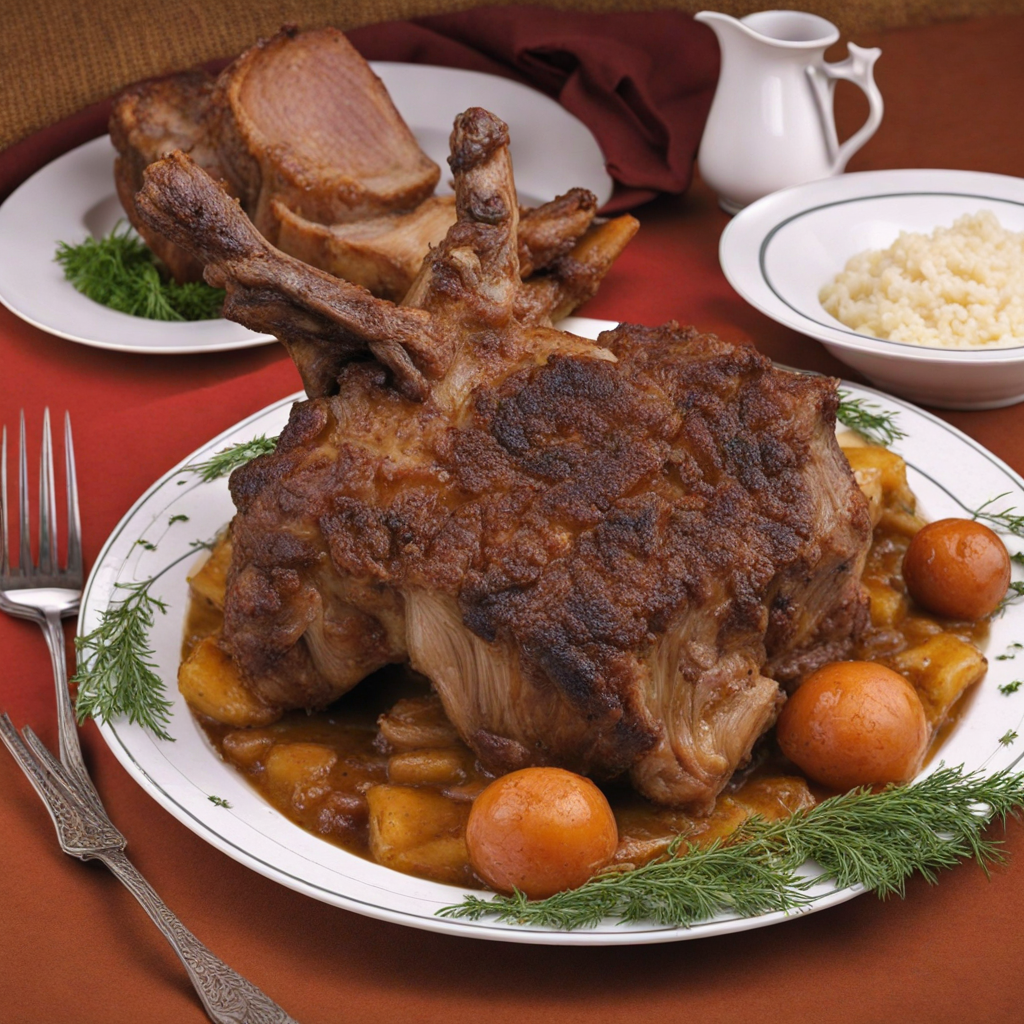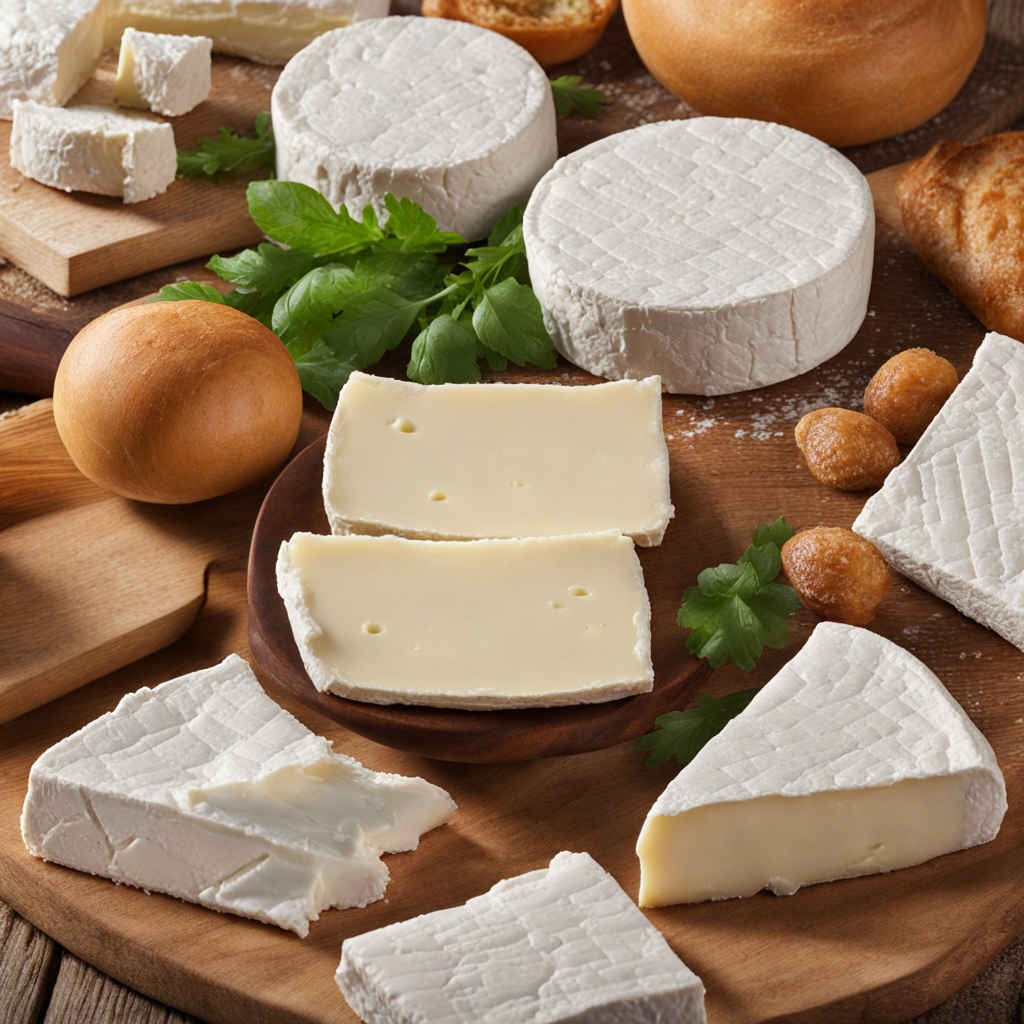Kajmak
Kajmak is a creamy dairy product that hails from the Balkans, particularly beloved in Serbia, where it holds a special place in the culinary tradition. This rich and velvety spread is made from the milk of cows, sheep, or goats, and is often compared to clotted cream or crème fraîche, yet it possesses its own unique characteristics. The process of making kajmak involves simmering the milk and allowing it to cool, which results in a thick, buttery layer that forms on the surface. This layer is then skimmed off and can be aged to develop deeper flavors, ranging from mild and creamy to tangy and sharp, depending on the maturation process and the type of milk used. Kajmak is typically enjoyed as a condiment or spread, complementing a variety of dishes. It is a staple in traditional Serbian cuisine and is often served with grilled meats, such as ćevapi, or alongside fresh bread, where it can be slathered on generously. Its creamy texture and rich flavor enhance the taste of savory foods, making it a perfect accompaniment for charcuterie boards or as a dip for vegetables. The interplay of kajmak's richness with the smokiness of grilled dishes creates a delightful balance that is sure to tantalize the taste buds of anyone seeking a new culinary experience. This delectable dairy product also plays a role in various traditional recipes, often incorporated into pastries, savory pies, or even as a filling in dumplings. Its versatility allows for creative uses in the kitchen, whether as a topping for baked goods or as a secret ingredient that elevates the overall flavor profile of a dish. For those eager to explore the flavors of Serbia, kajmak offers a taste of the region's rich agricultural heritage and is an essential component of the local gastronomy that invites you to savor every bite.
How It Became This Dish
The History of Кајмак: A Delicious Serbian Tradition #### Origins of Кајмак Kaјmak is a rich, creamy dairy product that has become synonymous with Serbian cuisine. Its origins can be traced back to ancient pastoral societies in the Balkans, where the practice of dairy production was essential for sustenance. The word "kaјmak" itself is derived from the Turkish word "kaymak," which means "cream." This reflects the historical influence of the Ottoman Empire on Serbian culture and cuisine, especially in the realms of dairy products. The process of making kaјmak is quite simple yet requires skill and patience. Traditionally, fresh milk—often from cows, sheep, or goats—is boiled and left to cool before being skimmed. The cream that rises to the top is collected, and it can be aged for a few days to develop a richer flavor and thicker texture. The result is a velvety spread that has a slightly tangy taste, making it a versatile addition to numerous dishes. #### Cultural Significance Kaјmak is not merely a food item in Serbia; it holds a prominent place in the nation's culinary heritage and cultural practices. It is often enjoyed as a part of traditional breakfasts, served alongside fresh bread, and can be accompanied by cured meats, such as pršut (prosciutto) or kobasica (sausage). This simple yet hearty meal reflects the pastoral lifestyle that has shaped Serbian culture for centuries. In Serbian households, kaјmak is often associated with gatherings and celebrations. It is commonly served during family reunions, weddings, and other festive occasions, symbolizing hospitality and the joy of sharing good food with loved ones. In this way, kaјmak transcends being just a food product; it is a means of bringing people together and celebrating heritage. Moreover, kaјmak has regional variations within Serbia and the broader Balkan region. For instance, in some areas, it may be seasoned with salt or herbs, while in others, it may be enjoyed plain. This diversity reflects the local customs and agricultural practices that influence how kaјmak is produced and consumed. #### Development Over Time As Serbia transitioned through various historical eras—from the Byzantine Empire to the Ottoman rule, and later, the Austro-Hungarian Empire—the production and consumption of kaјmak evolved. Each of these regimes left their mark on the culinary landscape, incorporating new techniques and flavors into traditional practices. During the Ottoman period, kaјmak gained prominence and became a staple in the diets of many people in the region. The Ottomans refined the techniques of dairy processing, leading to the development of more sophisticated forms of kaјmak. It became a culinary symbol of wealth and status, often enjoyed by the elite. The association of kaјmak with luxury and indulgence continues to this day, as it is often served in upscale restaurants alongside gourmet dishes. In the 20th century, particularly after World War II, Serbia underwent significant social and economic changes. The rise of socialist policies led to the establishment of state-run farms and the centralization of dairy production. While this ensured a more consistent supply of dairy products, it also changed the traditional methods of making kaјmak. Many artisanal producers faced challenges in maintaining their craft, as commercial production methods took precedence. However, the late 20th and early 21st centuries saw a resurgence of interest in traditional foods, including kaјmak. As people became more conscious of the importance of preserving culinary heritage, many small-scale producers began to revive traditional methods of making kaјmak. This movement was supported by a growing appreciation for artisanal and locally sourced foods, leading to a renewed popularity of kaјmak in both domestic and international markets. Today, kaјmak is not only a staple in Serbian households but also a sought-after delicacy in gourmet restaurants across the globe. Chefs are increasingly incorporating kaјmak into modern dishes, showcasing its versatility. From being a simple accompaniment to grilled meats and vegetables to being used in sophisticated sauces and dressings, kaјmak has found its way into the contemporary culinary lexicon. #### Kaјmak in the Global Context As Serbian cuisine gains recognition on the international stage, kaјmak has become a culinary ambassador for the country. It is often presented at food festivals and cultural events, allowing people from different backgrounds to experience this unique dairy product. The promotion of kaјmak is also tied to Serbia's broader efforts to promote its culinary heritage and attract gastronomic tourism. In recent years, efforts have been made to protect the authenticity of kaјmak through initiatives aimed at preserving traditional production methods. Some producers have sought certification to distinguish their products, ensuring that consumers can identify genuine kaјmak that adheres to traditional practices. This desire for authenticity resonates with contemporary consumers, who value not only taste but also the story and cultural significance behind the food they consume. #### Conclusion In summary, kaјmak serves as a delicious and meaningful representation of Serbian culture and culinary history. From its ancient origins to its contemporary revival, kaјmak has remained a cherished food that embodies the rich agricultural traditions of the Balkans. Its cultural significance is deeply woven into the fabric of Serbian life, symbolizing hospitality, celebration, and the joy of sharing food with others. As Serbia continues to navigate the complexities of modernity while honoring its past, kaјmak stands as a testament to the resilience of traditional food practices. Whether enjoyed in a rustic village or a modern restaurant, kaјmak is a reminder of the enduring connection between food, culture, and community, making it an essential part of Serbia's culinary heritage.
You may like
Discover local flavors from Serbia


